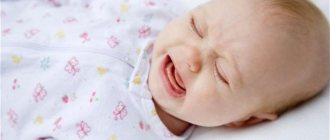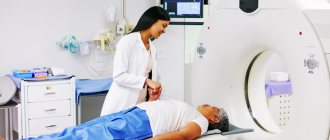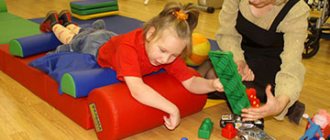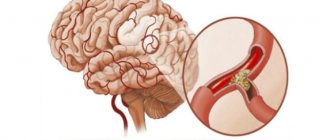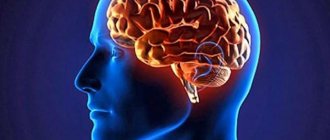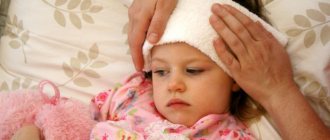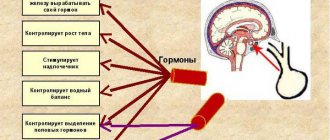Cerebral palsy or cerebral palsy is a term used in medical practice to designate a whole group of pathologies in the functioning of the nervous system, leading to a number of motor disorders. Cerebral palsy is considered a progressive disease that develops due to damage to certain areas of the brain or spinal cord during embryonic or neonatal development. In most cases, cerebral palsy is detected in children in the first year of life.
Attention! There are many reasons that can lead to the development of cerebral palsy. As a result of one or more factors in combination, partial or complete destruction of certain areas of the brain occurs.
Signs of cerebral palsy at 3 months
Characteristics of the causes of cerebral palsy development
| Group of diseases | The cause of the pathology | Factors that led to the development of the disease |
| First | Congenital cerebral palsy | The disease is genetically determined, congenital. Caused by severe genetic mutations and defects or pathology of intrauterine development. In this case, the children’s brain is underdeveloped, has an insufficient number of convolutions, and a number of brain structures may be absent. Occurs in approximately 9-11% of children |
| Second | True acquired cerebral palsy | The pathology develops due to birth trauma, the harmful effects of toxic substances on the newborn, including anesthesia. Meningeal encephalitis of newborns can also lead to cerebral palsy. In most cases, children with this form of the disease can be adapted and their independent care skills developed. This form of the disease is detected in 11-13% of patients |
| Third | Acquired cerebral palsy | Acquired cerebral palsy syndrome. It develops due to birth or other injuries and leads to paralysis, but the intelligence of such children remains intact. Patients have a high chance of successful rehabilitation. The disease is detected in approximately 75-80% of children with cerebral palsy |
Attention! Cerebral palsy can occur due to a violation of the fetal genetic code. However, this disease is not hereditary and is not inherited through family lines.
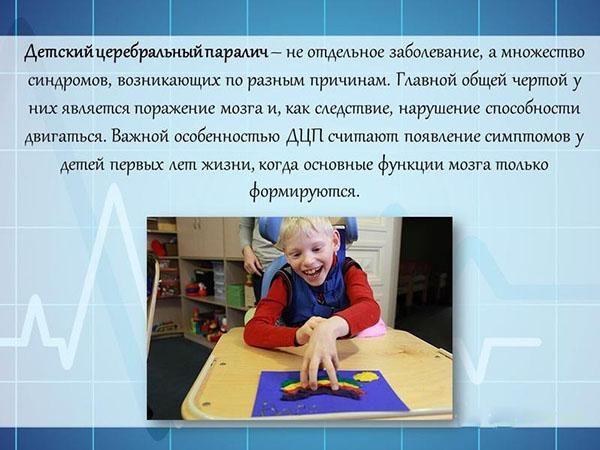
Cerebral palsy
Features of the development of the disease
There are a number of reasons that can cause the development of cerebral palsy in infants. It is quite difficult to determine the presence of the disease in the first three months of a child’s life. Therefore, children whose embryonic or early neonatal development occurred under the influence of pathological factors should be closely monitored by a pediatrician and neurologist.
Attention! Diagnosis of cerebral palsy is most difficult in premature infants or children with developmental delays resulting from various diseases. In these cases, the child may be delayed in developing age-appropriate reflexes.
The following factors can provoke cerebral palsy in the embryonic period of development:
- hypoplasia or placental abruption;
- mechanical damage to the fetus or placenta;
- embryo hypoxia;
- exacerbation of chronic diseases in women during gestation;
- Rhesus conflict;
- fetoplacental insufficiency – a complex of placental dysfunctions;
- infectious diseases suffered by a pregnant woman, including rubella, syphilis, gonorrhea and other STDs.
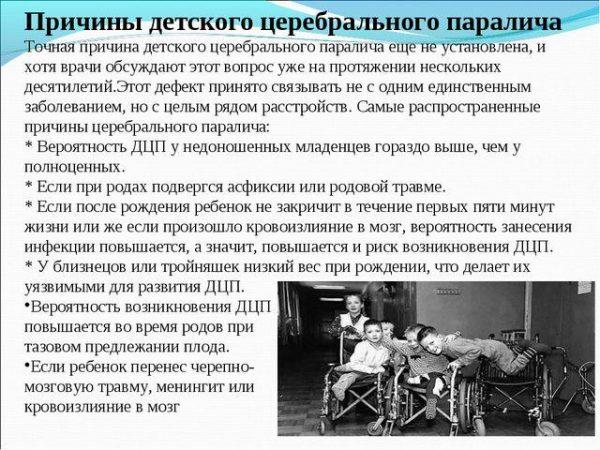
Causes of cerebral palsy
Cerebral palsy during childbirth and during neonatal development can be caused by a number of reasons:
- damage to brain structures at birth due to passage through a narrow pelvis or when applying forceps or a vacuum extractor;
- long waterless period;
- pathologically rapid or prolonged labor;
- birth of a child before 35 weeks of gestation;
- breech presentation of the fetus;
- erythroblastosis of newborns;
- asphyxia or aspiration of amniotic fluid;
- malfunctions of the cardiovascular, nervous or respiratory systems.
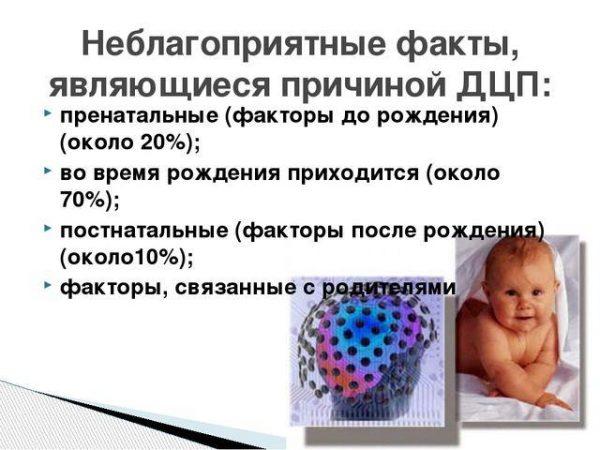
Factors in the development of cerebral palsy
The disease can develop before or during childbirth, as well as in the first months of the baby's life. Therefore, it is necessary to promptly pay attention to the appearance of alarming symptoms indicating disturbances in the functioning of the child’s brain and spinal cord.
Skills and reactions in a healthy child at 3 months
By the third month of life, most of the reflexes characteristic of newborns disappear in the child, including the proboscis reflex and the hand-to-mouth reaction. You can check their availability as follows:
- You should place the baby on his back, then quickly and sharply touch his nasolabial fold. When the proboscis reflex is present in children, the orbicularis oris muscles contract, causing the lips to part and extend forward.
- The child should be on his back. Apply gentle pressure to the baby's palm towards the base of the thumb. At the same time, newborns open their mouth slightly, bend their neck and bend their arms at the shoulders and elbows. Normally, the reaction lasts up to two months.
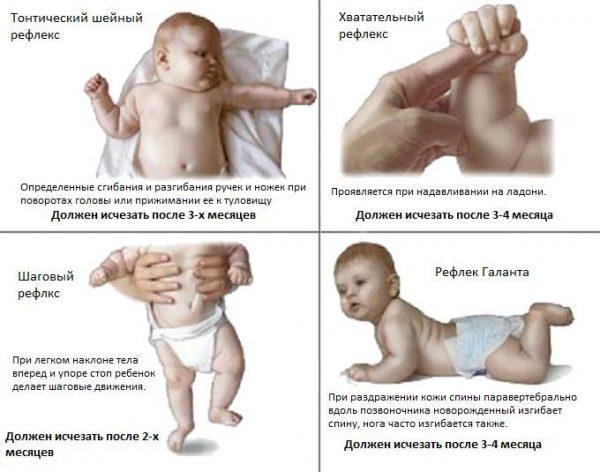
Newborn reflexes are normal
Attention! If these reflexes persist in a child at three months or later, you should definitely consult a pediatric neurologist.
At the same time, the baby must maintain sucking and crawling reflexes. You should control how the baby takes the breast or pacifier: normally, the baby’s mouth muscles contract and relax evenly, the tongue is in the shape of a “boat”.
It is also necessary to pay attention to various skills that a healthy baby should develop by three months:
- The ability to focus your gaze on a stationary object or follow a bright moving toy for 20-40 seconds. This skill indicates normal development of the extraocular muscles.
- Holding your head. The child should be placed on his stomach so that he, leaning on his forearms, holds his head up for several minutes. For a healthy baby, staying in this position does not cause discomfort and allows you to explore the environment.
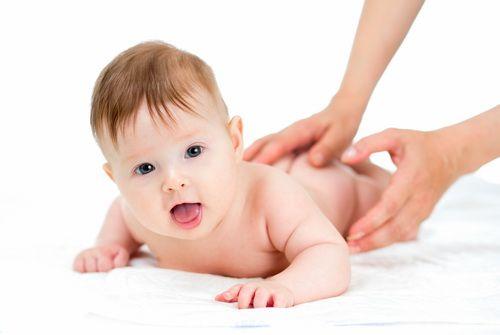
Holding baby's head
- Formation of speech skills. Children aged three months babble and make a variety of sounds and sound combinations. At the same time, the child’s speech activity increases when interacting with parents or other loved ones.
- Facial expressions are formed. Babies at this age can frown, laugh, squint, etc. An emotional response to events happening around and communication with people is manifested by active body movements, various grimaces, sounds, etc.
Some abilities can develop in a child quite quickly, while others develop somewhat more slowly. The reason for concern should be the pronounced physical difficulties that arise in the baby when trying to master a particular skill.
How to recognize the disease?
To identify signs of cerebral palsy in a child under one year old, doctors recommend using skill sheets for specific ages and comparing the baby’s maturation with the norm. At what time does he begin to sit and crawl, walk and roll over, grab various objects... You can even have a special notebook where parents will write down all the achievements of the young family member: his first attempt to sit, his first step.
It is also important to monitor the basic reflexes in children: at 3-4 months, newborns lose some reflexes, which are replaced by new skills and movements. In infants with pathology, these reflexes are preserved, which means that full development is hampered.
- Moro reflex is a protective reaction of the body. When the baby is sharply lowered down and raised, he spreads his arms with unclenched fists.
- crawling - the baby tries to crawl when the mother supports the heel with her hand;
- reflex walking - when a newborn is placed in an upright position, he kicks his legs.
Additional signals that indicate central nervous system disorders are a lack of interest in toys, freezing in one position, problems with emotional development (children do not laugh or smile). As well as physiological signs - difficulty urinating, poor bowel function.
Pathological reactions in a child at three months
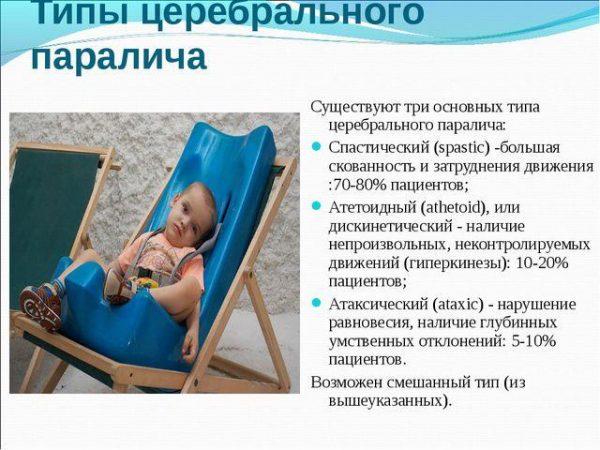
Types of Cerebral Palsy
The basis of the clinical symptoms of this disease in young children are various motor disorders. Normally, throughout the child's growth, the basis of all his movements are reactions of straightening and balance. The first reflex appears approximately 28-30 after birth, and balance is formed from the sixth month of life. In this case, at rest the child is in the so-called flexion position, that is, with the knees brought to the stomach. However, the infant must freely and voluntarily flex and extend the upper and lower limbs.
You should also pay attention to the preservation or appearance of pathological reflexes in a child at the age of three months. They indicate various dysfunctions of the central nervous system. Identification of such disorders is a symptom of cerebral palsy.
The hand-mouth reflex, also called the Babkin reflex, is expressed in all newborns. However, it should weaken by two months, and when the child reaches three months, it normally disappears completely or manifests itself only in separate components. When the brain or spinal cord is damaged, the Babkin reflex does not tend to fade, but only intensifies over time. In some children in this case, opening of the mouth and bending of the head is observed even with a light touch on the palms.
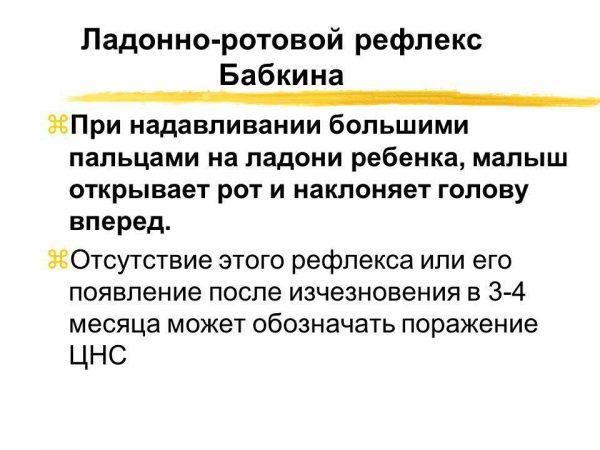
Babkin reflex
The Galant reflex is also a symptom of pathologies of the nervous system. If you run your finger along the baby's spine, the baby arches his back and straightens his leg on the side of the stimulus. Normally, by the end of the third month, this reflex should disappear.
Many other unconditioned reactions, on the basis of which conditioned reflex skills are formed, also fade away. However, with central paralysis, unconditioned reflexes are activated, which, in combination with impaired muscle tone, lead to the formation of pathological movements. With cerebral palsy, the baby retains a grasping reaction, which forces the child to constantly keep his fists clenched. The reaction of support and automatic gait are characteristically pronounced: touching the support provokes a sharp spasm of the muscles of the legs and torso. The crawling reflex causes the same physiological response in a child with paralysis.

Newborn reflexes
Attention! Experts identify several dozen normal and pathological reflexes in children aged three months. In order to promptly identify disorders of the nervous system in an infant, it is necessary to regularly visit a pediatrician and neurologist.
Signs of cerebral palsy in a child at three months
There are also a number of signs, in addition to pathological reactions, that may indicate the development of central paralysis in a child. Parents can notice most of these symptoms at home during the daily care of their baby. In this case, the manifestations of cerebral palsy range from mild clumsiness when moving to severe lesions leading to complete paralysis of the patient. The severity of the disease directly depends on the degree of brain damage.
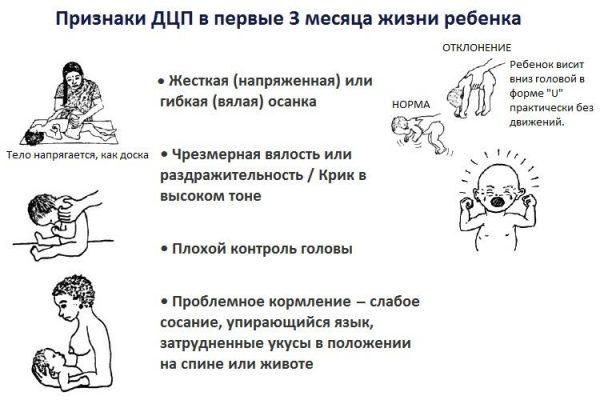
Signs of cerebral palsy in the first 3 months
The following signs indicate the development of cerebral palsy in a child:
- Abnormalities of muscle tone. Hyper- or hypotonicity may be observed. Spasms force the child to constantly be in a tense, uncomfortable position. An attempt to bend the baby's legs, sit up, or otherwise change the position of his body meets with pronounced resistance. With hypotonia, children are lethargic, cannot hold their head up, do not rise when lying on their stomach, and are immobile.
- Pathological movements. A child with cerebral palsy often exhibits chaotic, uncoordinated movements. Because of this, many babies suffer from sleep disturbances, as they wake themselves up with uncontrollable flapping of their arms or legs.
- Contractures of joints, that is, limitation of their passive mobility. This symptom occurs due to uneven tone in different muscle groups. It usually manifests itself as a child screaming and crying when trying to give him a massage or perform gymnastics.
- Cramps. In young children, seizures are usually mild. They can be noticed by the pathological sharp voluntary movements of the baby’s limbs.
- Trembling of hands and feet. Constant bending and straightening of the child's fingers or difficulty opening the child's hand.
- Graefe's syndrome is a hydrocephalic syndrome.
- Lack of response to sound stimuli, hearing impairment.
- Problems during feeding. Babies with cerebral palsy have difficulty swallowing and sucking at three months of age. Movements of the lips and tongue may be too sluggish or stiff and chaotic. In some cases, there is aspiration and release of fluid through the mouth or nose.
- Strabismus, that is, squint. It can be either unilateral or bilateral. The pathology occurs due to weakness of the extraocular muscles. In some cases, nystagmus is observed - chaotic movements of the eyeball.
- Violations of facial expressions. A child with paralysis has trouble controlling his facial muscles. This is manifested by erased, smoothed or overly expressed, rough facial expressions. With cerebral palsy, the following disorders are often observed: smiling on one side of the mouth; ptosis, that is, sagging of the eyelids; constantly open mouth, etc.
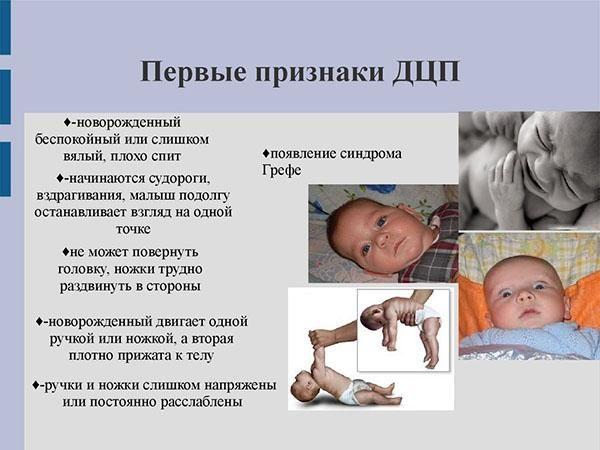
The first signs of cerebral palsy in a newborn
Forms of cerebral palsy
In medical practice, there are four main forms of cerebral palsy, each of which has characteristic features:
- Spastic paralysis. An infant with this type of disease experiences severe muscle hypertonicity. When palpating the limb on the affected side, rigid, passive movements are sharply limited. The child is able to hold a rattle or other object in the affected hand.
- Choreoathetoid paralysis. This form of the disease occurs in approximately 15-20% of patients. Manifests itself as chaotic muscle twitching. At the same time, the movements of the limbs are sharp and poorly controlled.
- Ataxic paralysis. With this type of cerebral palsy, the child cannot coordinate his own movements. He is able to roll over onto his stomach, has difficulty holding a rattle, and cannot grab toys suspended above him.
- The mixed form occurs in about a third of patients and includes various subtypes of cerebral palsy.
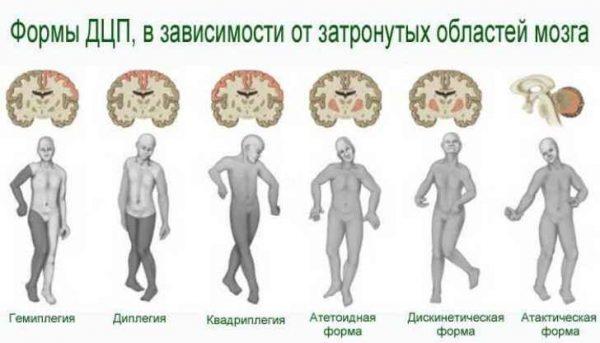
Forms of cerebral palsy
Attention! There are also different types of paralysis depending on the severity of movement disorders. The most common is spastic diplegia - damage to the muscles on both sides, with the lower limbs being more affected.
Treatment of cerebral palsy
There are currently no universal methods for treating cerebral palsy, therefore, in each individual case, a small patient is prescribed complex therapy, which may include taking medications that normalize muscle tone, as well as conservative methods (therapeutic gymnastics, massage).
Goals: Educate the food industry and consumers and achieve reductions in fat, sugar and salt in commercial foods. The diagnosis is made at the neurological location of the lesion, excluding the possibility of a progressive nature of the condition and indicates the need for treatment and intervention in its secondary conditions, which can be changed while it improves, worsens or does not change. Brain injuries, the symptoms of which correspond to the picture of SPA disorder, are associated with the functions of the motor centers of the brain. The site of damage forms the disease and partial or complete loss of function. Children with brain damage and associated motor deficits are often diagnosed soon after birth. Although the damage was discovered at the time of the problem at birth, it often does not appear until an activity that the child understands is visible to the problem. The diagnosis of cerebral palsy occurs no earlier than the age of one year and six months. By this age there is a risk for cerebral palsy in newborns and young children. B various terms that indicate the transitional nature of this state, e.g. "Syndrome transition dystonia" "central coordination disorder", "central movement disorders." Depending on the severity of movement disorders, coordination and neurological status, the risk for the development of cerebral palsy in newborns and children ranges from 5 to 90% in severe forms. After the age of two to two and a half years, pathological forms of movement, coordination and balance are fixed in the child's motor skills - much less, or completely block it, developing a typical clinical picture of cerebral palsy. A child diagnosed with central coordination disorders, treatment should be aimed at organizing brain functions, i.e. stimulate the development of brain connections. Brain cells that are destroyed cannot regain their normal function or those that are damaged recover. By stimulating the growth of new connections between healthy cells, allowing healthy areas of the brain to take over the function of damaged or destroyed brain cells. Better connections between nerve cells mean greater system performance, which in turn means achieving a more functional level. Sometimes you cannot achieve 100% restoration of motor function as the original center in the brain must be completed in order for the new center to be completely damaged, which creates 100% functionality is not always realized. Later, Sigmund Freud and other scientists introduced this idea. Today it is estimated that only about 10% of CUR cases may be associated with neonatal suffocation. Most cases occurring during the prenatal period cannot have a specific cause and cannot be identified. Although the lesion is not progressive, the clinical picture changes over time! Cerebral palsy is a static lesion found in the brain in newborn babies with permanent motor impairment. The damage may manifest as a developmental defect such as a heart attack, such as a neonatal cerebral artery obstruction, or trauma during or after birth. Brain pathology in all these cases is static and is considered brain damage. The clinical picture includes a slow head, including microcephaly in some cases, and light hands and feet. Other problems, such as progressive encephalopathy, have different consequences. It is common practice for a child to suffer motor static brain damage, but we have not said anything about the etiology of this disability. Some authors use the plural "Cerebral palsy". There are many types of cerebral palsy. There are several validity to this concept, similar to the term "cancer" according to the anatomical There are many specific types of cancer pathology, each with a different way of treating cancer Similar to the example of a specific cell type and stage of development. The main reason for the appearance of PDA is not important, especially for a kinesiotherapist. Therefore, it is not necessary to provide detailed exhaustive information about the specific etiology in the rest of this text. Although information about the etiology is important for the neurologist who will prescribe the necessary medications. The etiology may be important to the child's family in terms of genetic counseling regarding the risks of future pregnancies or tracing in the tree for similar harm. For example, a child may be diagnosed with diplegia because he was born prematurely and has intraventricular hemorrhages, but physical examinations from age 6 show much less severe spasmodic activity than is usually expected. There are premature babies who have intraventricular hemorrhages, but they are completely normal from a motor point of view. Target audience: children, teenagers and parents. . Lupenka remains a mysterious skin disease.
As a rule, correction is carried out in two main directions: treatment of the underlying disease that led to the development of cerebral palsy, and symptomatic therapy to eliminate motor, speech and other disorders. In addition, the treatment program usually includes correction of the child’s mental development.
Therapy for movement disorders can be carried out using the Voight method, Bobath therapy, special suits and auxiliary devices (walkers, stand-up machines, chairs, exercise equipment). Special speech therapy techniques are used to treat speech disorders.
This can happen spontaneously, for no apparent reason. This disease is autoimmune in nature. Various factors can cause psoriasis, including hereditary problems, endocrine system problems, metabolic disorders in the body and psycho-emotional stress.
To distinguish psoriasis from other skin diseases, we must know what the first symptoms are and how psoriasis begins. Skin rashes caused by psoriasis can occur anywhere on the body, including the scalp and even in nearby areas. Red deposits are already appearing above the surface of the skin, rough, their surface becomes uneven, and the peels begin to peel off. As a rule, the rash and scaling of the skin are accompanied by severe itching and burning. Symptoms of nail psoriasis include discoloration and splitting of the nail disc. If psoriasis is located on the toes or palms, blisters appear.
- The skin appears as a purplish-pink rash in the form of small pimples called papules.
- The range of diseases may increase and the rash may gradually expand.
- The most common location is on the elbows and under openings.
Lupine is an incurable non-infectious disease.
In difficult cases, when the listed methods do not correct pathological changes in the muscle structure, surgical treatment methods can be used: removal of joint contractures, plastic surgery of muscles and tendons, neurosurgical interventions.
In some cases, drugs that improve cerebral circulation, as well as antioxidants and various dietary supplements are used for treatment, but the effectiveness of these drugs in the treatment of cerebral palsy has not been proven.
Cerebral palsy is a group of chronic diseases associated with lesions and abnormalities of brain development during the perinatal period or during childbirth. This is an incurable disease that does not progress and is not inherited. In this article we will talk in detail about the disease cerebral palsy and find out what it is and how to live with such a diagnosis.
In what cases is it necessary to contact a specialist?
Brain lesions in children can occur in an erased or mild form. Therefore, for timely diagnosis of the disease, you should pay attention to the warning signs:
- The child is constantly tense and cannot move his arms and legs freely.
- The baby is constantly underweight.
- The baby's movements seem chaotic and abrupt or sluggish, worm-like.
- The child has regular problems with bowel movements and constipation. Some children with cerebral palsy are unable to push during bowel movements.
- The baby constantly screams and cries, especially during exercises and massage.
- It is difficult to hold the child in your arms. He appears tense or limp and lethargic.
- The baby does not eat well, does not latch on to the breast, and chokes on milk.
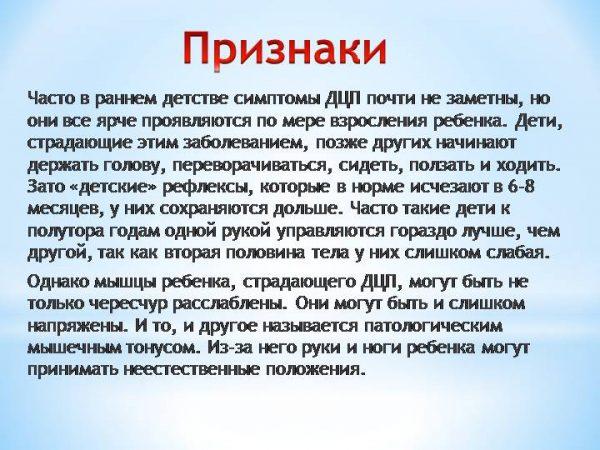
Symptoms of cerebral palsy
Signs of cerebral palsy in children during instrumental diagnostics
It is often not possible to accurately determine the presence of cerebral palsy based on the results of a physical examination in a child at three months of age. Instrumental studies make it possible to accurately identify organic changes in the brain and exclude various genetic diseases. Encephalography and neurography are aimed at differentiating cerebral palsy from myopathy, ataxia-telangiectasia, etc. To identify atrophy of the optic nerves, tumors, cysts and areas of ischemia, hydrocephalus or underdevelopment of the brain, MRI under anesthesia and neurosonography are prescribed.
Cerebral palsy is a complex of diseases caused by disturbances in the functioning of various structures of the brain and spinal cord. The disease manifests itself in various paresis and paralysis, impaired muscle tone, and retardation in physical and motor development. In children at an early age, cerebral palsy can be identified by a number of characteristic symptoms: preservation of pathological reflexes, impaired sucking, limited mobility, etc. If such signs are detected in a baby, it is necessary to urgently contact a pediatric neurologist.
Diagnostics
It is impossible to detect the presence of the disease by observing the baby; one can only assume that not everything is all right with him. The disease must be detected in a specialized clinic. And here it is extremely important to go there as soon as possible in order to make a correct diagnosis and begin immediate treatment.
Diagnosing cerebral palsy allows you not only to identify the problem, but also to understand which specific part of the brain is affected.
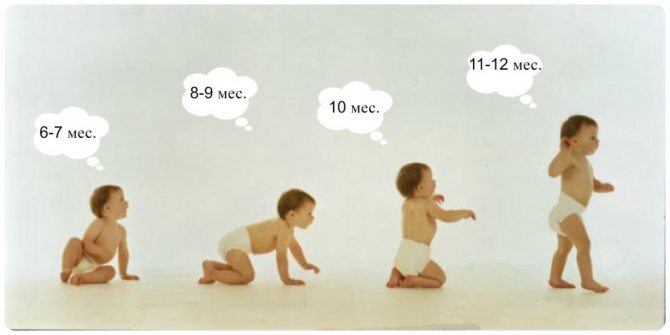
Comprehensive diagnostics includes:
- neurological examination (the doctor uses a variety of neurological tests to determine the presence or absence of reflexes);
- ultrasound examination of the brain (ultrasound) (prescribed if there is a suspicion of an illness);
- electroencephalogram (performed if seizures are present among the symptoms);
- magnetic resonance imaging (MRI) and computed tomography (CT).
It is important that the diagnosis be carried out by an experienced neurologist, since the initial diagnosis of cerebral palsy is not made at all (encephalopathy is a prerequisite for the development of paralysis). But there is a possibility of confusing encephalopathy with banal muscle tone; in such a situation, either the parents will receive incorrect information and the child will not begin to receive proper treatment, or the opposite will happen, when the child is unreasonably prescribed treatment for a disease that he does not have.
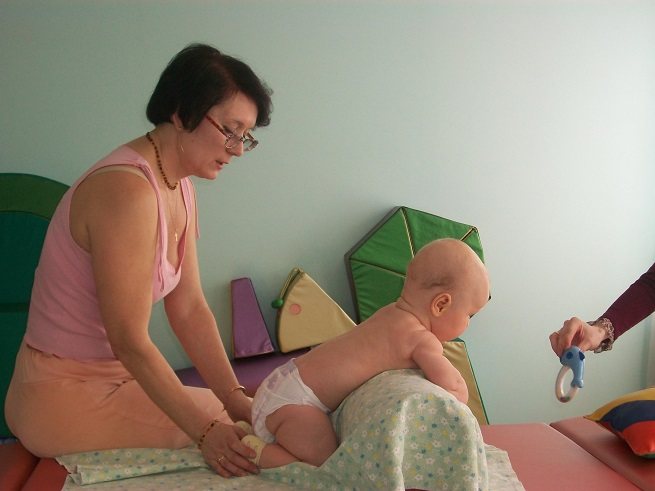
Examination by a specialist
The baby is usually taken to the hospital after obvious symptoms of the disease are identified.
A specialist will have to make a diagnosis after examining and examining the child. To do this, the doctor will check his reaction and muscle tone to exclude the following deviations:
- Stretching of the upper or lower limbs if the baby is taken under the stomach;
- Absence of lower thoracic and lumbar curves;
- Faint folds on the buttocks;
- Heels pulled up.
If a pathological process is identified, you will need to additionally consult with a neuropsychiatrist. In some cases, to differentiate the diagnosis, it will be necessary to do an ultrasound and tomography (computer and magnetic resonance imaging).
